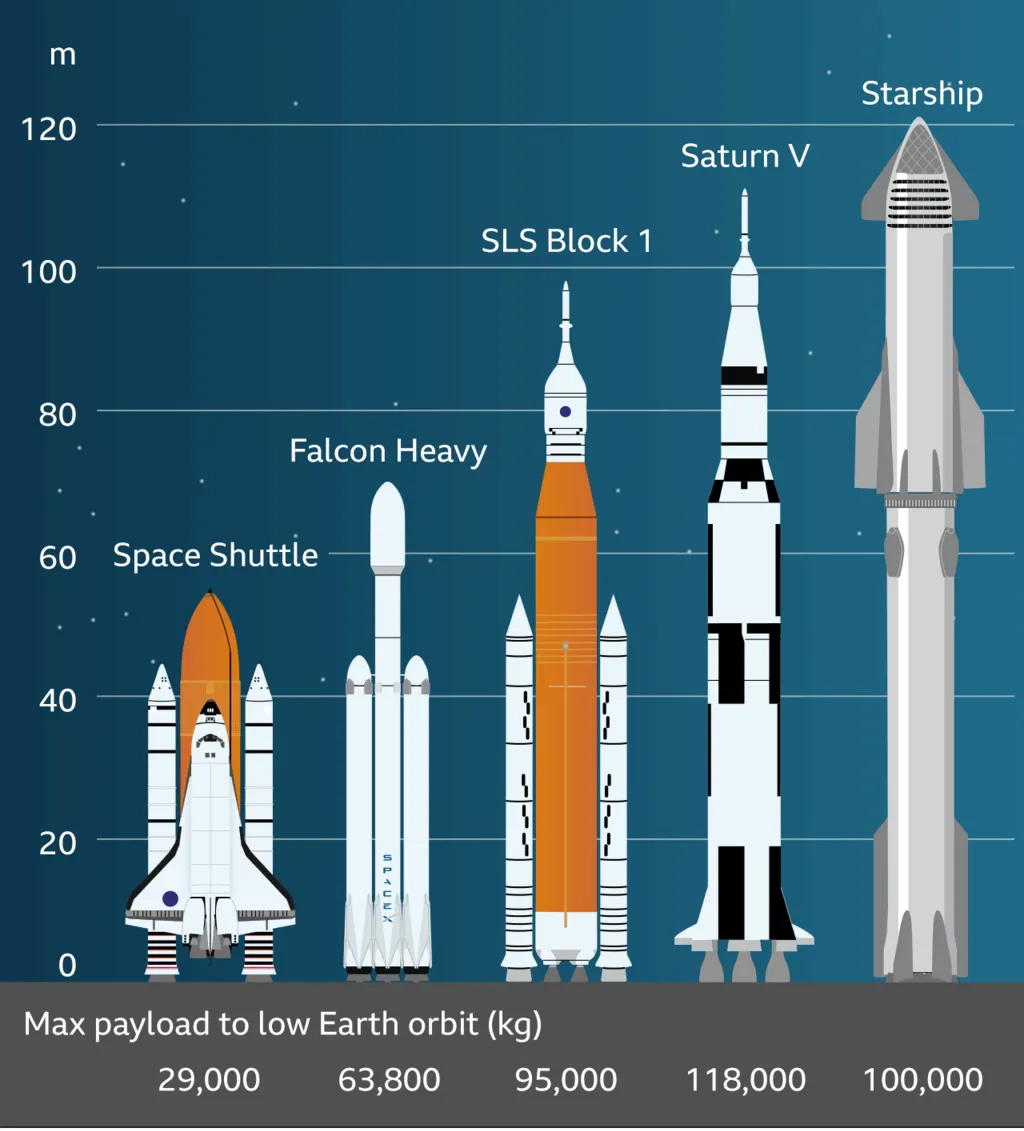Context:
On August 27, 2025, SpaceX’s Starship successfully completed a critical test flight, it is the world’s largest and most powerful rocket. This was its tenth attempt and marked the first successful mission since November 2024. Both the booster and the spacecraft stage performed nominally, with the latter reaching the Indian Ocean.
About Starship rocket:
Starship is a two-stage, fully reusable super heavy-lift launch vehicle developed by SpaceX, designed to eventually replace Falcon 9 and Falcon Heavy.
· It comprises the Super Heavy booster and the Starship upper stage, both powered by methane-fueled Raptor engines.
· Starship aims to be the first fully reusable orbital rocket with the highest payload capacity ever developed.
· As of August 2025, Starship has launched 10 times, with 5 successful flights. Both stages are designed to land vertically back at the launch site for reuse.
Key Features
- Two-stage reusable system: Starship (upper stage) and Super Heavy booster.
- Thrust capacity: 74 meganewtons via 33 Raptor engines — twice that of NASA’s SLS.
- Payload: Up to 150 tonnes to Low Earth Orbit; 100 tonnes to the Moon/Mars.
- Refueling in orbit: Enables longer, more efficient missions.
- Reusability: Reduces costs significantly — estimates suggest $50 million per Mars mission.
Scientific and Strategic Significance:
- Enables launch of larger telescopes, heavy lunar rovers, and deep drilling rigs on the Moon/Mars.
- Supports sample return missions, enhancing planetary science and astrobiology research.
- Central to NASA’s Artemis Program and future human missions to Mars.
- Can strengthen space cooperation or competition globally (e.g., with China’s lunar ambitions).
Challenges and Ethical Concerns:
- Safety and reliability remain unproven in crewed missions.
- Past failures and a high number of worker injuries raise ethical concerns about rapid development.
- Critics liken it to the Space Shuttle’s cost overruns and maintenance burdens.
About Heavy-Lift Rockets:
Heavy-lift and super heavy-lift rockets are essential for deep-space exploration, satellite deployment, and future crewed missions to the Moon and Mars. A super heavy-lift vehicle, as defined by U.S. standards, must lift over 50 metric tons to Low Earth Orbit (LEO). These rockets showcase a nation’s technological advancement and strategic space capabilities.
Top Heavy-Lift Rockets:
1. SpaceX Starship: The largest and most powerful rocket ever built, Starship is nearly 400 feet tall and designed for fully reusable space travel to the Moon, Mars, and beyond.
2. NASA’s SLS: The Space Launch System supports NASA’s Artemis program, enabling Moon landings with crew and cargo in a single launch.
3. Falcon Heavy: Previously the most powerful operational rocket, it remains crucial for commercial and scientific missions.
4. ISRO’s GSLV Mk III (LVM3): India’s most powerful rocket, vital for Gaganyaan and heavy satellite launches.
Conclusion
The success of Starship is a landmark in private space innovation. For India, it highlights the need for public-private synergy (as with IN-SPACe), investment in reusable launch vehicles, and expanding the commercial space ecosystem. It also reinforces the strategic importance of space in 21st-century geopolitics.







